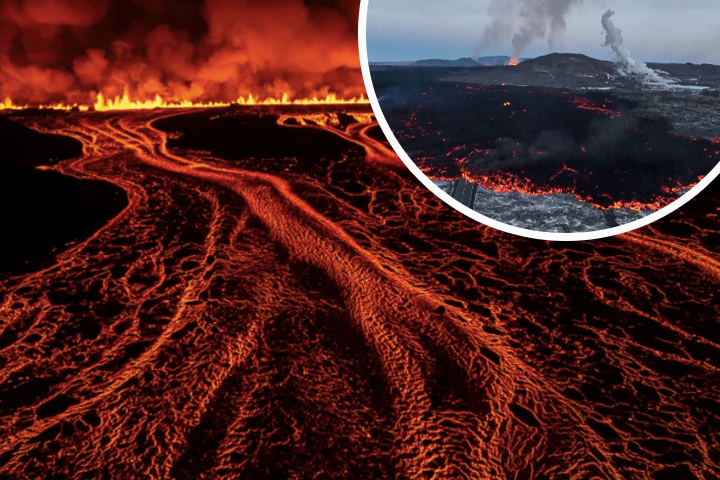


GRINDAVIK, Iceland—The volcano on the Reykjanes Peninsula in southwestern Iceland has erupted for the seventh time since December.
The eruption began abruptly at 11:14 p.m. Wednesday and caused a fissure that was around 1.8 kilometers long. The activity is expected to be far lower than the last eruption in August, according to Iceland's meteorological service, which tracks seismic activity.
“In the big picture, this is a bit smaller than the last eruption, and the eruption that occurred in May,” Magnús Tumi Guðmundsson, a professor of geophysics who flew over the scene with the Civil Protection agency to monitor the event, told the national RUV broadcaster.
Authorities have warned of gas emissions throughout areas of the peninsula, including the adjacent town of Grindavík. However, aviation traffic is not at risk due to the eruption.
According to RUV, some 50 residences were evacuated when the Civil Protection service issued the alarm, as were tourists at the well-known Blue Lagoon resort.
Volcanic eruptions in Grindavík, a 3,800-person town located 30 miles southwest of Reykjavik, have caused infrastructure and property damage, forcing many residents to flee for safety.
“Grindavík is not in danger as it looks and it is unlikely that this crack will get any longer, although nothing can be ruled out,” Magnús Tumi said.
Iceland, located atop a volcanic hotspot in the North Atlantic, has one eruption every four to five years. The most recent disruption was the 2010 eruption of the Eyjafjallajokull volcano, which blasted clouds of ash into the atmosphere and halted trans-Atlantic air travel for months.